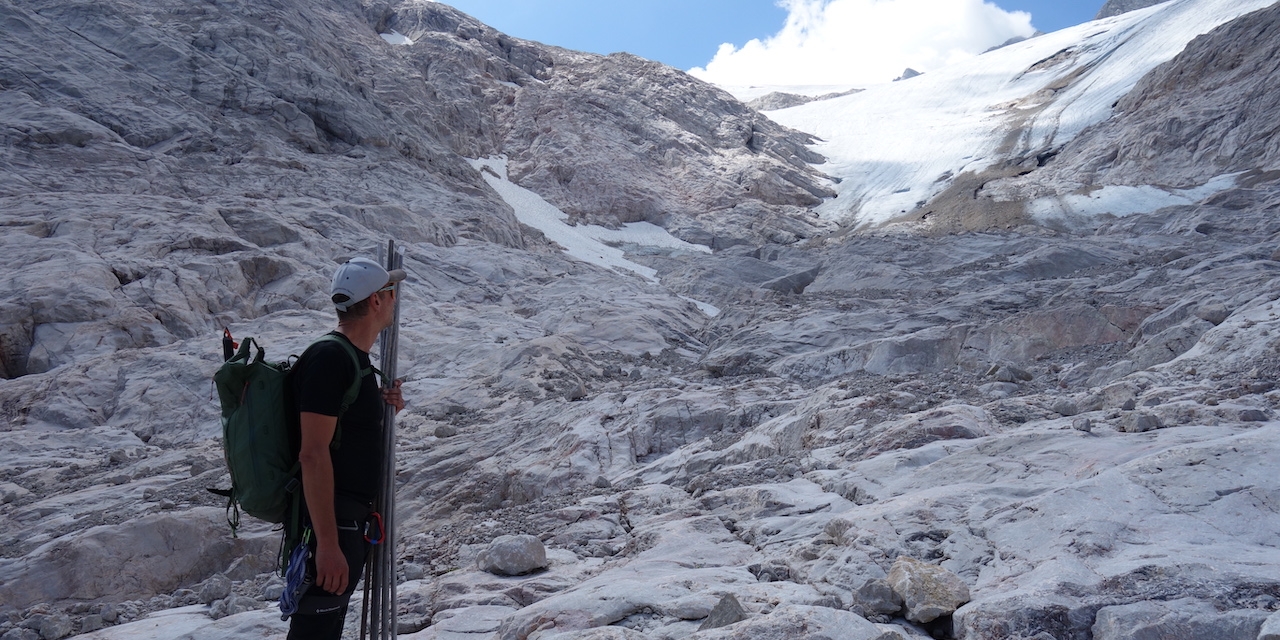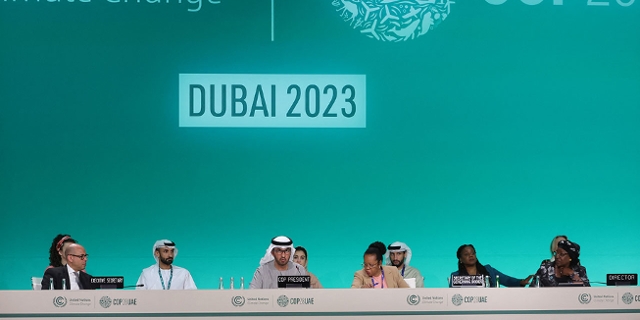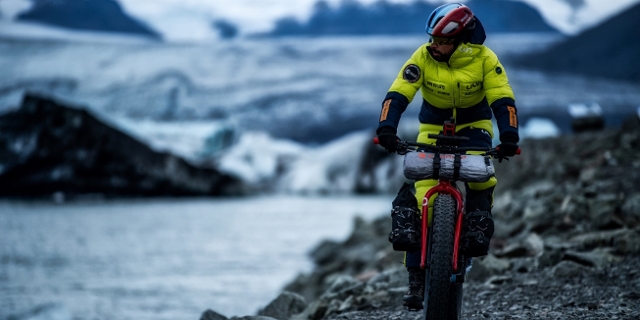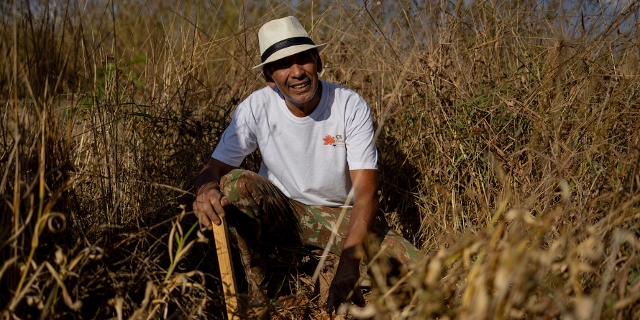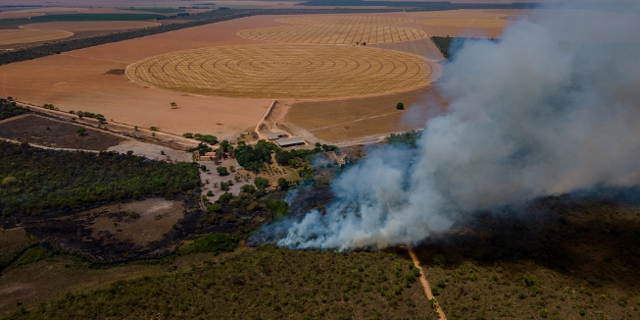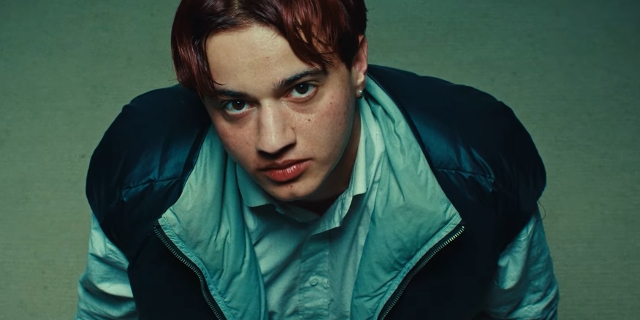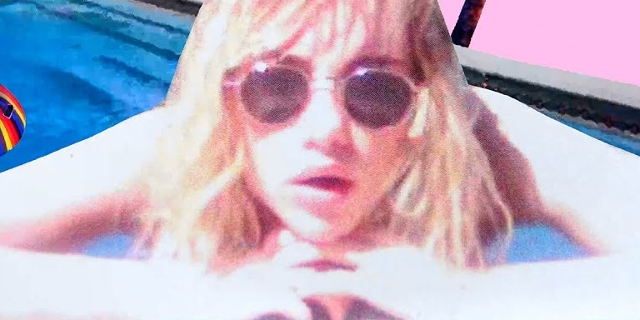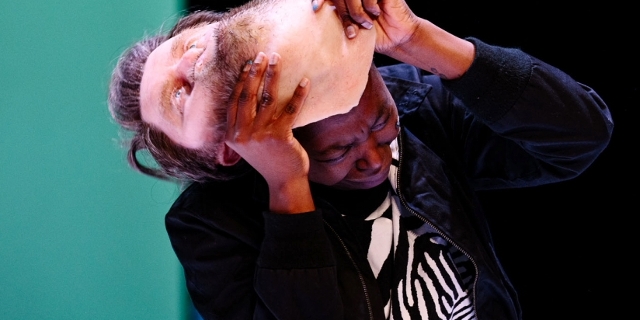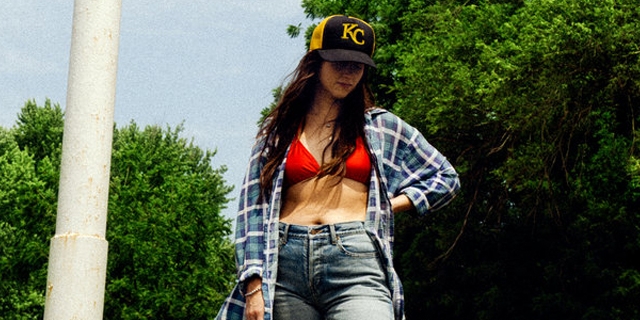A Disastrous Drip: The Death of the Glaciers
Austria’s glaciers are shrinking fast. They are getting shorter and they are getting thinner. The rate of melt is increasing year after year. And this week we got more devastating news. Scientists have long predicted that most glaciers will disappear within this century, now a new assessment by Andrea Fischer from the Institute for Interdisciplinary Mountain Research of the Austrian Academy of Sciences (ÖAW) says they will have mostly vanished by 2050.
The yearly shrinking is visible to the naked eye, and now we are seeing gruesome signs: bodies of lost mountaineers reappearing from beneath the once “eternal ice.”
Even if most Austrian glaciers appear doomed, it is vital that scientists better understand the precise dynamics of this melt. They want to create models to predict how climate change will impact other higher-altitude glaciers in the future.
Measuring The Melt
That’s why at the height of this current heatwave, I find myself leaving the Simony Mountain Refuge on the Dachstein with a trio of scientists from the Institute for Interdisciplinary Mountain Research. They are going to spend the day out to take measurements on the Hallstätter Glacier, a low-altitude glacier where the melt is highly pronounced and full of valuable insight.
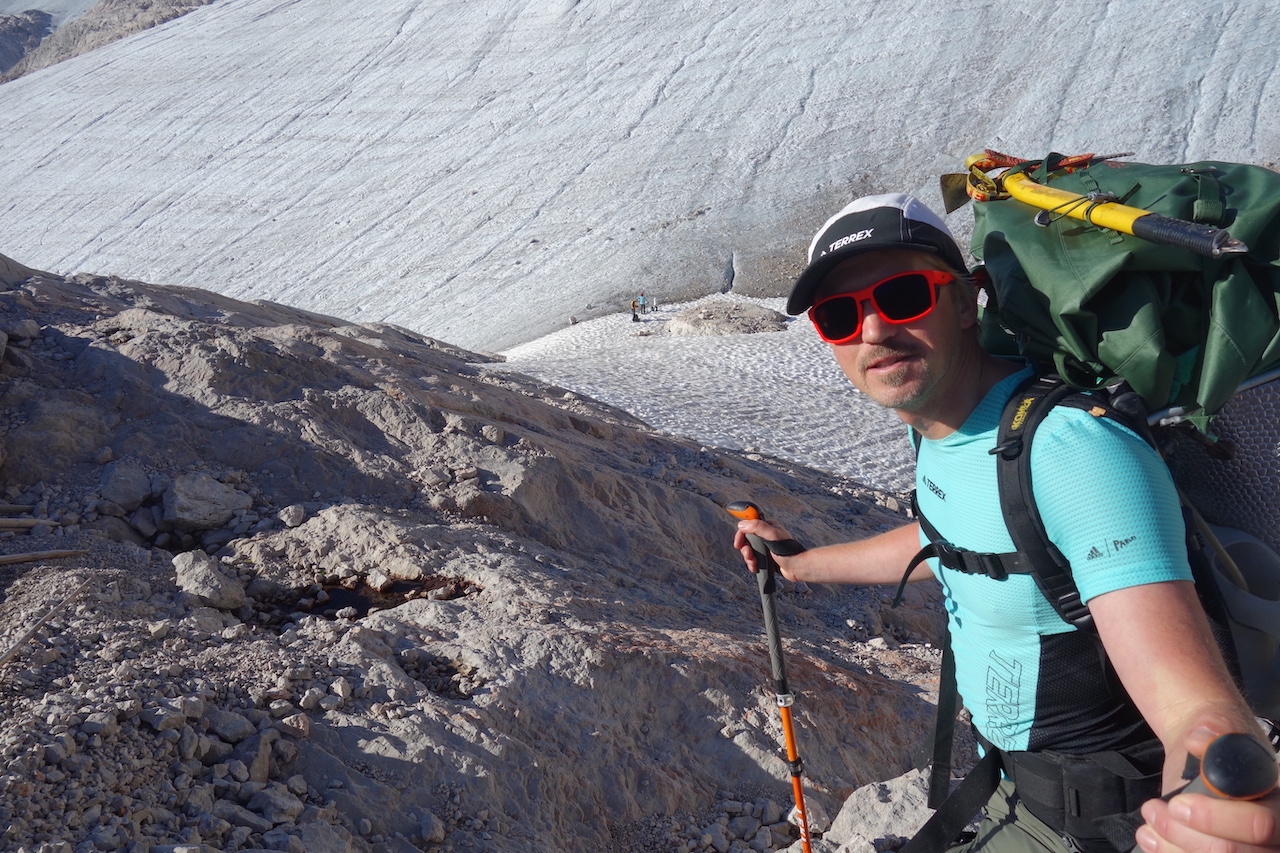
Chris Cummins
Kay Helfricht
The project, a project supported by Blue Sky Wetteranalysen, began 17 years ago and will last 30 years. That’s important, explains ÖAW glaciologist Kay Helfricht, because that time span gives us a fair understanding of which years are extreme outliers and what is the new normal.
Retreating At A Sprint
Even as we hike up towards the glacier, I can see with my naked eye that the situation was dramatic. We are above the rocky bowl where the ice had been until the end of the last mini ice-age 170 years ago. As we climb further, the occasional rock has been painted red to record the lowest extent of the lick of the glacier’s tongue at each year of the study.
When we reach the rock signifying the length of the glacier in 2013, it is still a long way to the ice-sheet; vast football fields of “eternal” ice have vanished within a decade.
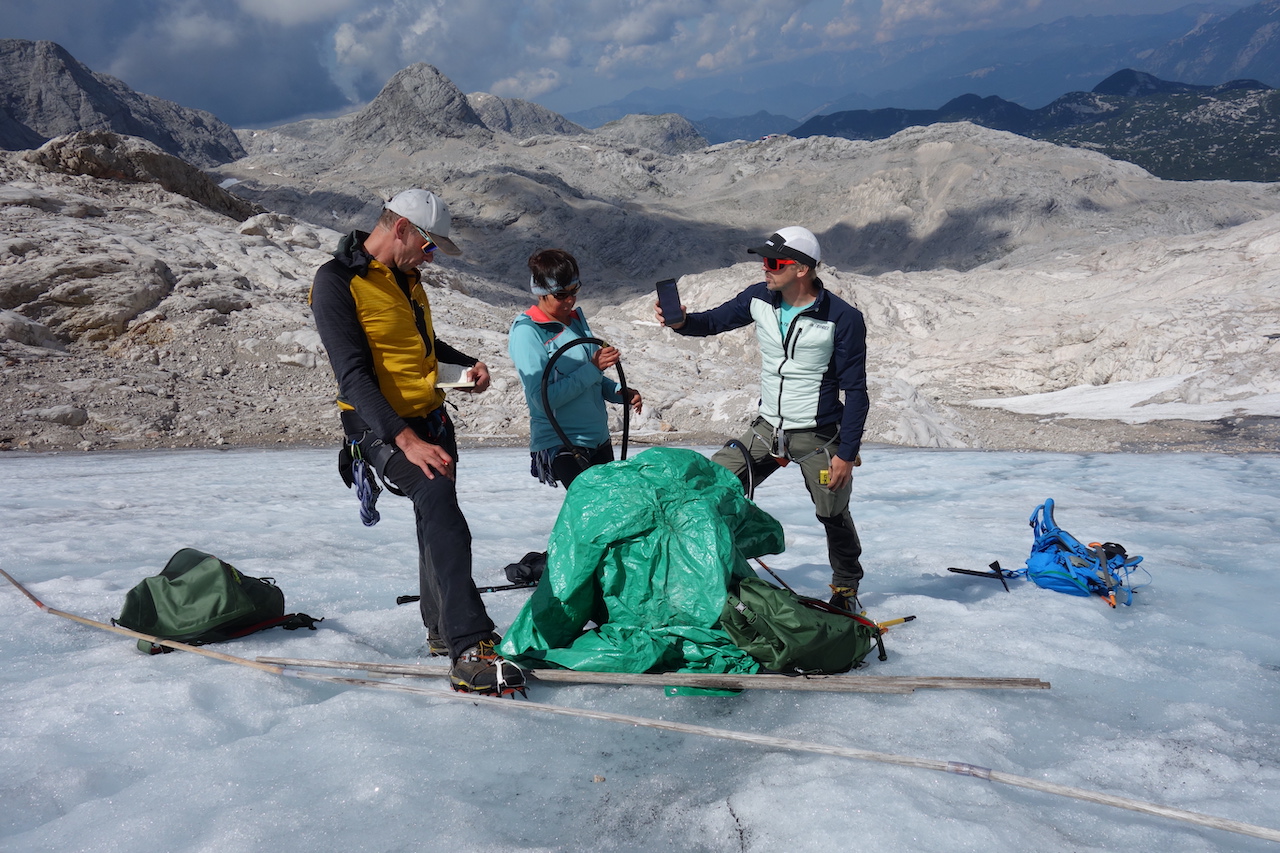
Chris Cummins
“For years, we’d see a loss in length of 6 or 7 metres per year,” says meteorologist Klaus Reingruber of Bluesky Weather Analysis. “But every year in recent years it has been 30 metres or more. ” Klaus is a soulful man with a clear love of the high mountains. I ask him how he feels recording this loss year after year. “I try to put the emotional side away when I am doing this job,” he told me, “but of course it is depressing. The landscape is changing.”
Trying To Understand The Mountains
The third member of the party is Elke Lemmerer, a geographer and now retired teacher who has helped with the project since its inception. “It’s fun to climb to the peaks of the mountains I love,” she tells me, “But with this project I am helping to understand them better. It just makes sense.”
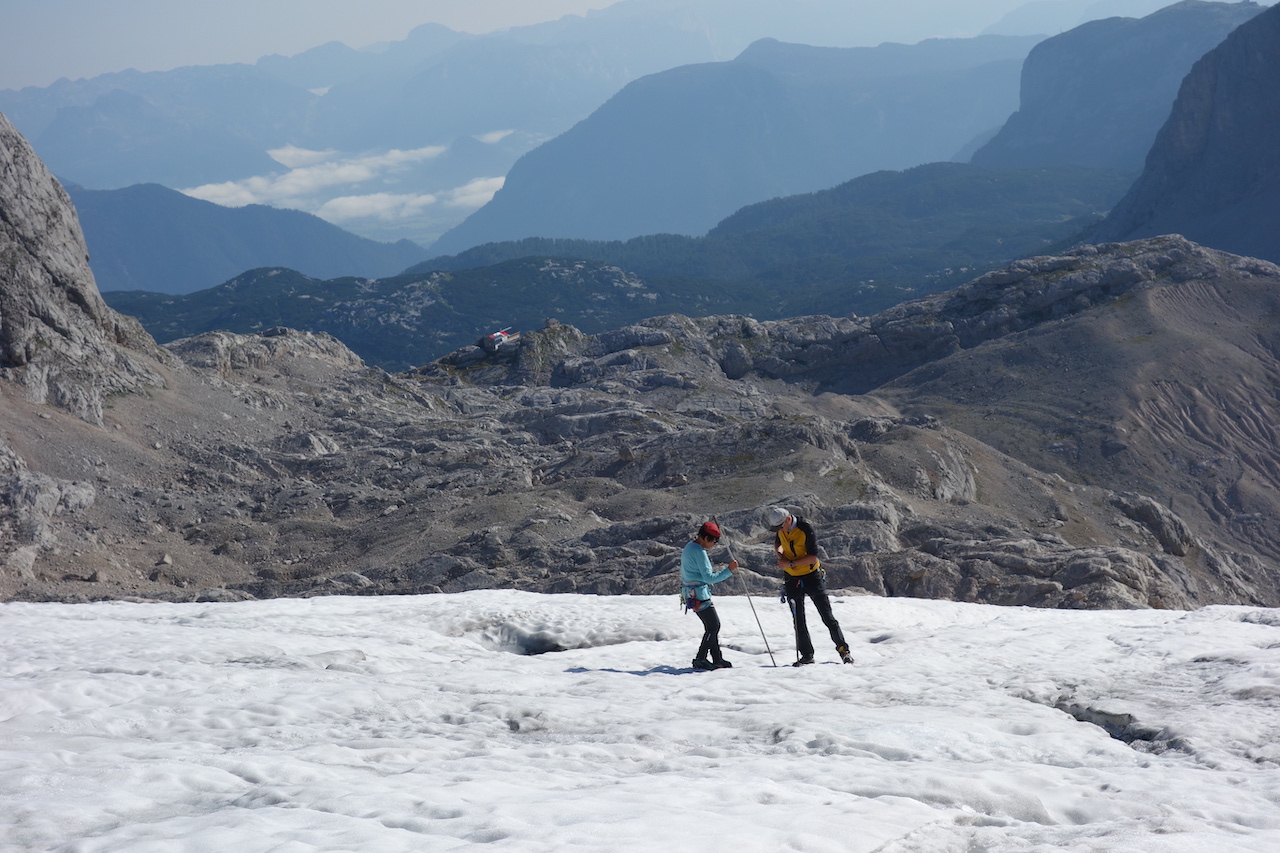
Chris Cummins
To measure changes in the height of the scientists have to bore deep holes in the glacier. That’s why, when Klaus and I cross across to him, Kay is squatting over what looks like a big square camping cooker that he has rather heroically lugged up here on his back. It is attached to a very long coil of tubing with, at the end, a thin metal lance like on the end of a pressure hose.
Steam Digging
“It’s a steam probe,” he explains. “We fill it with water and then the water turns into steam and then comes out through the lance. The steam melts the ice and we can dig down nice and deep.”
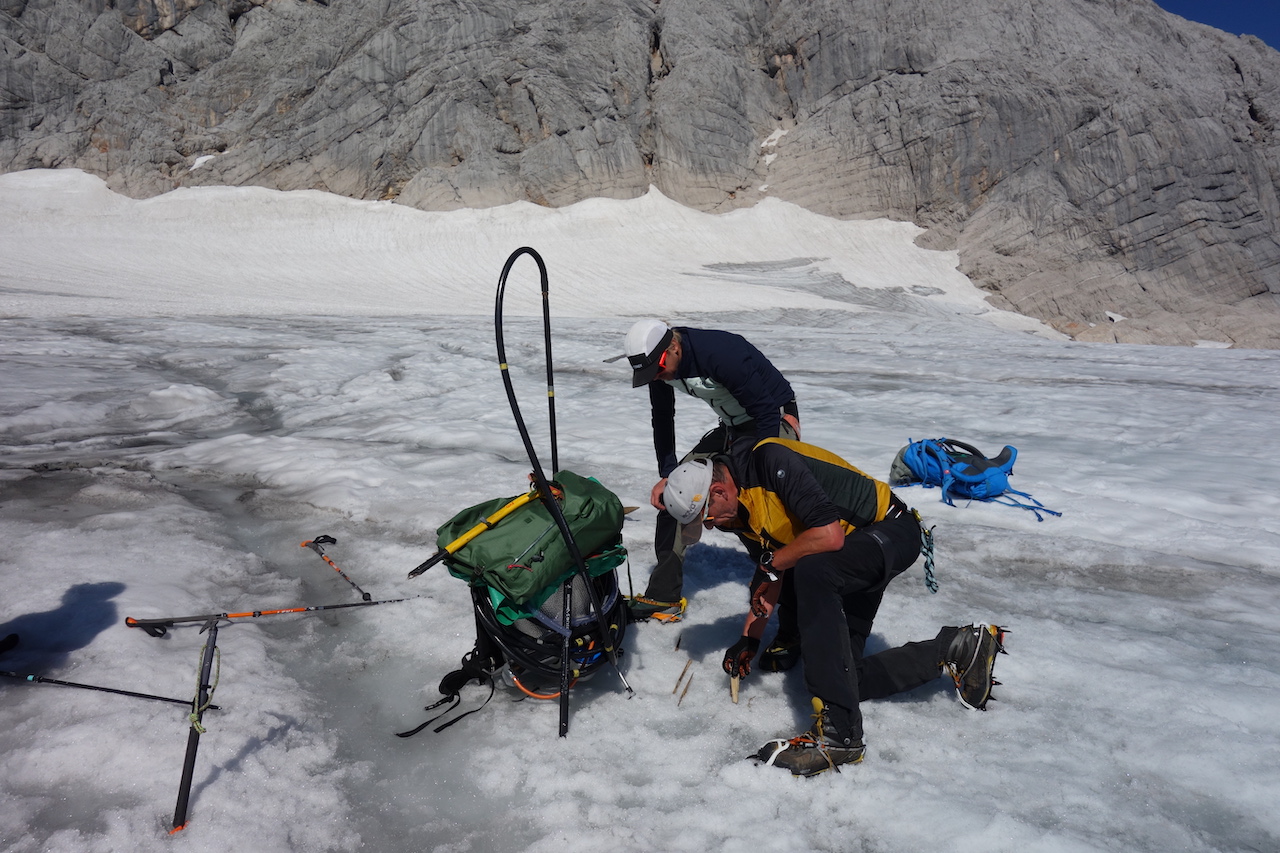
chris cummins
It’s all delightfully lo-tech; at these altitudes and, especially in these conditions, simplicity means resilience. Klaus is now helping Kay place a long pole, known as an ablation stake, into the hole. The stake is made up of several pinewood sticks, held together with bits of rubber.
”I don’t know who figured this out, but that pinewood doesn’t bend that much,” explains Klaus. “As a result of the melting, the stick grows out of the hole again and we can then read directly what has melted.”
So half the job is putting a few new ablation stakes into the ice, and the other half is marching with crampons up and down the glacier to read the melt from the many stakes planted on previous trips. As the lactic acid burns in my thighs, I realize you need good legs as well as a good brain to study glaciers.
Running Water, Soggy Snow
As I traipse after Klaus, following directly in his experienced footsteps to avoid the danger of crevasses, I watch the rivulets of water run beside us over an ice-sheet. The remaining snow has been reduced to a soggy slush that threatens to get my socks wet. “That’s hundreds of liters of water per minute flowing away probably,” says Klaus. “Unfortunately it is normal for recent years.”
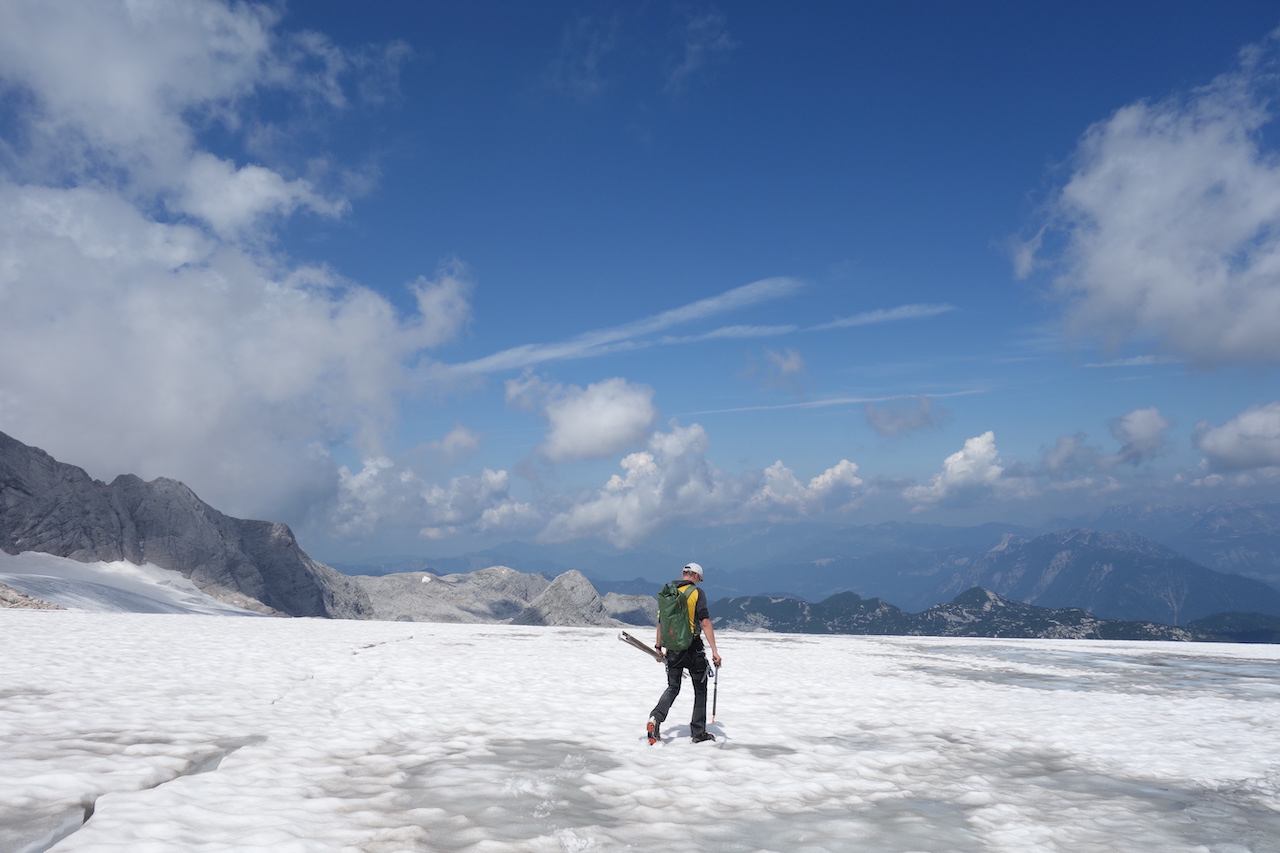
Chris Cummins
The glacier here is mostly a dirty grey-blue colour, a far-cry from my dreams of pristine purity. “The surfaces of the glaciers are getting darker and darker,” Kay explains. “More and more dirt accumulates on the surface, simply because of the strong melt and it then just stays on the surface.”
A Vicious Circle of Melting
This discoloring is not just bad for the aesthetics of Austria’s tourism emblems; it is increasing the melt because of the reduced reflectivity of the glaciers. “We say it is a ‘positive feedback’ although, of course, it is a negative phenomenon,” says Kay. “The process reinforces itself. So if there’s a lot of melting, then of course a lot of dark material remains on the surface that was previously enclosed under the ice. This dark surface absorbs more of the sun’s rays and more ice melts again.”
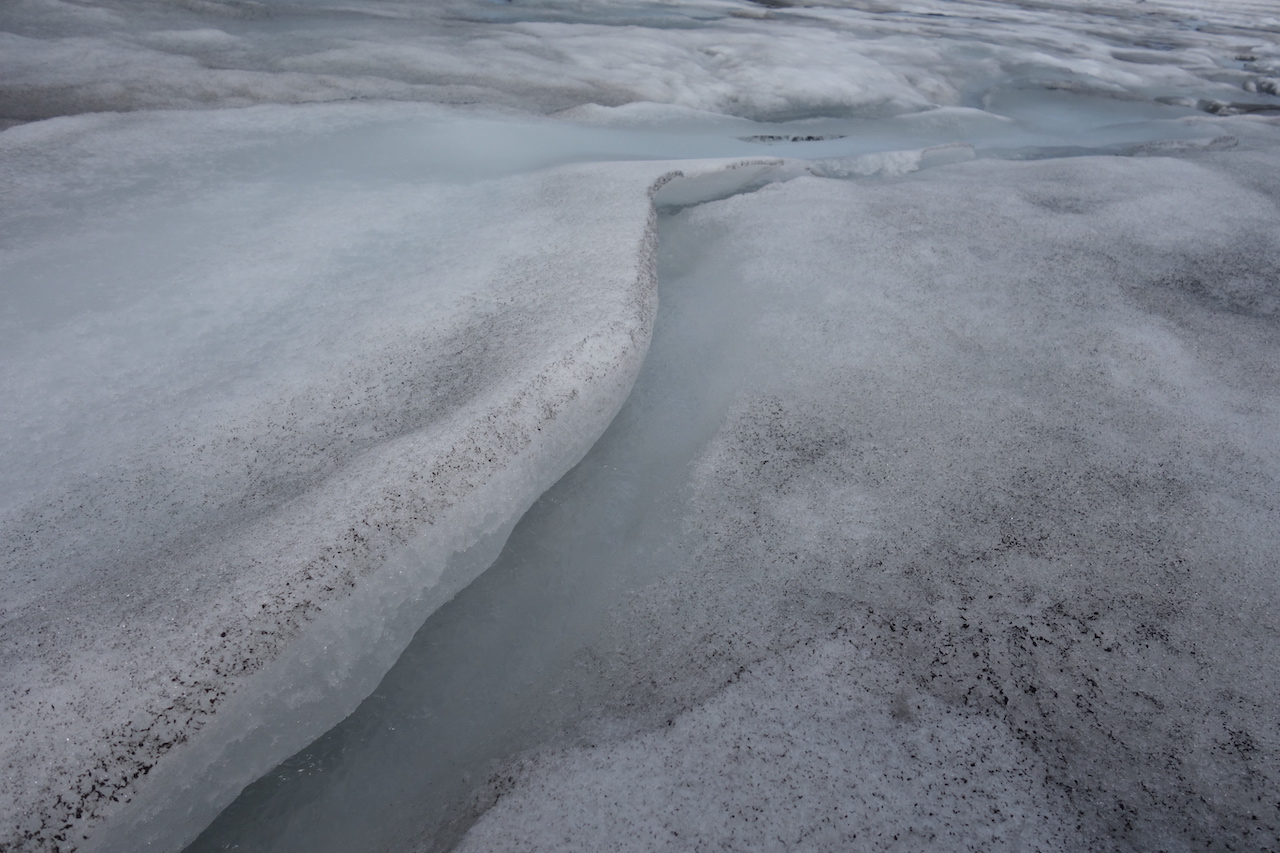
Chris Cummins
On we tramp, ever upwards, towards the upper reaches of the glacier where the cable-car station is disgorging dozens of tourists. A trip to the glacier has always been a tourism magnet in Austria. I spot an ablation stake leaning out of the ice-sheet at a raking angle and Klaus sets about measuring the melt. He uses his trusty wooden ruler and his note-pad and pen.
“This is the highest point for today,” he tells me. “We’re at 2,400m, so the melting shouldn’t be as bad as further down.” But the rush of water was loud in our ears. “Let’s see what’s been lost this year… I guess half a meter has already gone away this year." I’m astounded. What? Half a meter in just 12 months? “No, half a meter since Spring.”
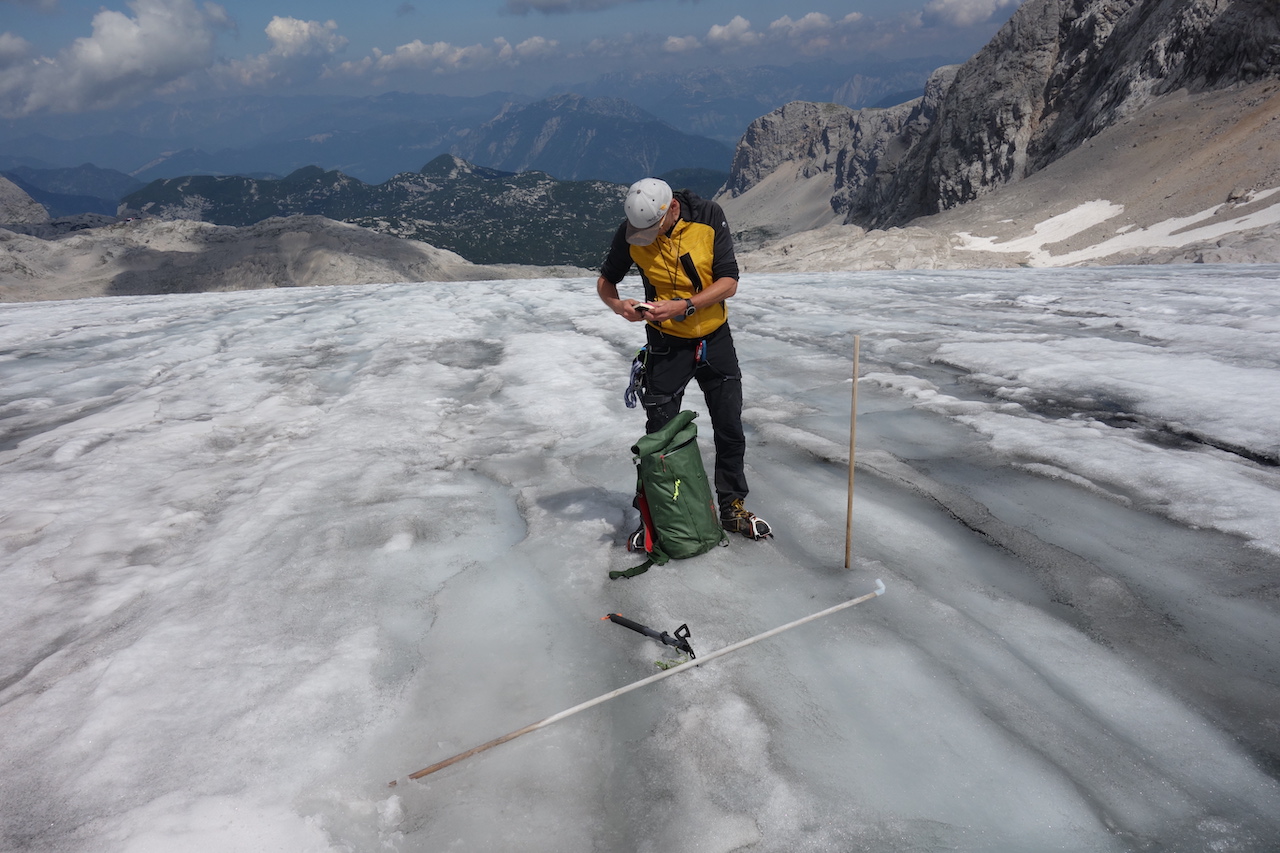
Chris Cummins
What is Extreme?
There has been a lot of talk about what is “normal” and what is “extreme” in the climate debate this year. This melting seems to me to be extreme; and to wish to change our polluting habits significantly seems a rather reasonable and rational response.
But, if we finally pull together, can we turn the situation around?
Well, yes and no. For a glacier to grow again it would take several years of favourable conditions, explains Kay. We need high levels of snowfall to give them a protecting cloak of snow and cooler temperatures. We do experience such years from time to time but they are real exceptions and then another hot dry year comes along and wipes away the benefits. What was once considered extreme is now the new normal.
This won’t change soon
There’s a 30 year lag in the climate system, explains Kay, which means whatever happens with our current and future climate policy, we will be paying for our past sins until past 2050. But that doesn’t in any sense mean that what happens now doesn’t matter, insists Kay. “Every fraction of a degree of warming will have an impact on how much glaciers are left and where they are.”
Kay is still hopeful that the high glaciers of the Ötztal, such as the Gepatschferner and the Pasterze in the High Tauern mountains will retain some of their ice into the 21st century, but Austria will be mainly ice-free in summer.
Austria Will Be Transformed By The Melt
What will that mean? “Well it will change Austria’s water systems,” says meteorologist Klaus, “and the vegetation will change, with many species marching higher up the mountain. It will of course impact tourism.” He adds a warning, “I’m confident that nature will adapt to the new situation, but will we humans adapt?”
So can we save at least some of Austria’s glaciers? “Well a lot has to happen by 2030,” Klaus says. “It is 5 past midnight. All countries will have to act, not just those of the European Union. And, at the moment, I can’t see that happening.”
Publiziert am 05.09.2023







